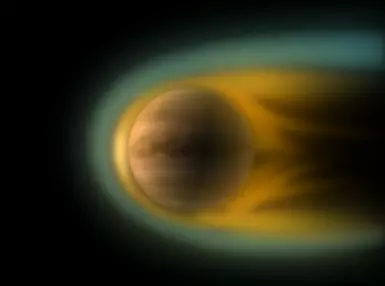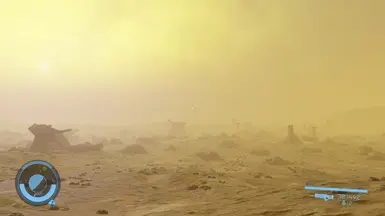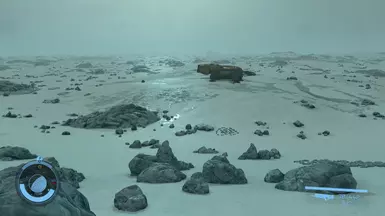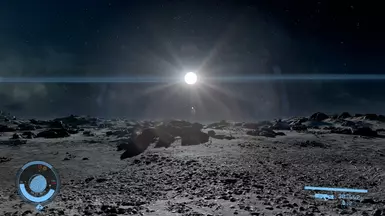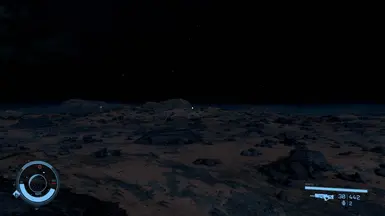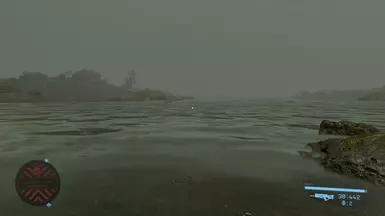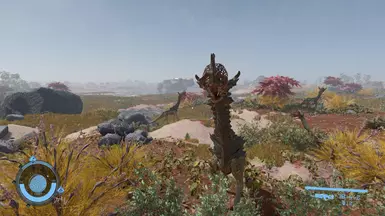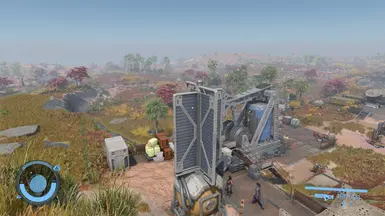About this mod
A small mod that changes hazardous radiation environments to make habitable worlds safer and barren worlds deadlier based on a more complex and semi-realistic model.
- Permissions and credits
- Changelogs
Reasoning
If you've done some exploring in Starfield, you've probably noticed how "extreme radiation environment" hazards don't always make sense. For example, the first thing you see when leaving your ship on Venus is "extreme solar radiation", even though that's the only non-issue on the real planet. Or, you might find a perfect paradise moon on the distant outskirts of a remote system—complete with breathable atmosphere, a decent magnetosphere, tropical forests, safe oceans, plentiful life and a spectacular view of gas giant rings—only to be greeted with radiation poisoning the moment you step outside (looking at you, Schrödinger VIII-a).
The opposite is also true: some barren, atmosphereless rocks are often completely safe from radiation, even while being fried by the local sun (like Volii Beta near Neon). And those that aren't safe only have dangerous radiation levels during local daytime—which makes no sense for bodies like Pluto (getting little sunlight) or the Moon (and basically anything without an atmosphere), where cosmic radiation is always intense.
This happens because Starfield uses a simplistic logic: "If magnetosphere < average, then radiation during daytime". This mod aims to make the system more nuanced.
Mod Logic
The magnetosphere is no longer the only deciding factor. Instead, the atmosphere plays a major role in determining whether the surface environment is radioactive—similar to real world, where a strong magnetosphere alone can't block all radiation. While it surely helps, the atmosphere does most of the work. However, in the absence of a magnetosphere, a very dense atmosphere (like Venus’) can still prevent surface radiation entirely.
With this in mind, we have two edge cases:
- Planets with extreme atmospheres are now shielded from radiation, no matter what.
- Planets with no atmosphere are always exposed to radiation.
For everything in between, a strong enough combination of atmosphere and magnetosphere is required. Based on Venus (which needs solely a level 4 atmosphere to block radiation), I've come up with a lazy "total score" system where each level of magnetosphere strength (very weak < weak < average < ...) and atmospheric pressure (thin < standard < high < extreme) contributes 1 point. Therefore a planet needs a total score of 4 to be fully shielded from radiation, which fits nicely with the default game's logic—for example, Montara Luna (with Waggoner Farm being the open settlement in established lore to have the lowest score) also has a score of 4.
As a
However, there's still the issue of a scorched planet with an Earth-like atmosphere and a very weak magnetosphere near a local sun applying radiation the same way as a distant, barren ice ball with no protection. To fix this, I've decided to split all radiation into 2 types:
Cosmic radiation - Titan is the reference here—some cosmic radiation reaches its surface, but not that much to be considered an issue. Titan has the total score of 3 (2 atmosphere levels + 1
Solar radiation - functions as before (you get irradiated during local daytime), but makes sense only for bodies that are relatively close to their sun. Distance can be deduced from temperature, so "relatively close" = not "Frozen" or "Deep Freeze". Atmospheric moons are tricky though, as they often are temperate (volcanism or something) while all their neighbours have -200 °C, so I dropped the requirement for them to hotter than temperate as I haven't noticed any that were incorrectly affected by that.
Additionally, I fixed radioactive water—it now actually applies radiation. Check out the nearest ocean next time you’re in Hopetown.
TL;DR
- No atmosphere? → Radiation always.
- Some atmosphere?
- Weaker-than-average magnetosphere?
- Total score < 3? → Radiation always.
- Total score = 3 and close to the sun? → Radiation during daytime (same as vanilla).
- Otherwise? → Safe.
- Average (or stronger) magnetosphere? → Safe (same as vanilla).
- Weaker-than-average magnetosphere?
- Extreme atmosphere? → Safe.
- Radioactive water is now radioactive.
Compatibility
Should be compatible with everything except mods modifying when environmental damage is applied, those might need a patch. This mod overwrites only 2 vanilla conditions: ENV_CND_OnExtremePlanet_WeakMagnetosphere_DayTime (0004787D) and ENV_CND_Water_Apply_Radiation (001F761F).
I didn't touch the planetary generation and habitability checks to avoid messing up POIs and radiant quests. All places that were safe from radiation before should still be safe now besides the zero-atmosphere planets.
Credits
Bethesda for Starfield and CK
ElminsterAU and the xEdit team for their invaluable tool
C. Carreau, ESA for the title image










